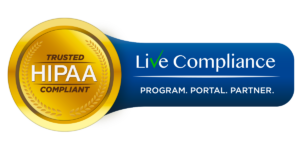
Remote Patient Monitoring (RPM) is revolutionizing healthcare delivery by leveraging advanced technology to remotely collect and monitor patient health data. This innovative approach enables healthcare providers to improve patient outcomes while reducing costs and enhancing accessibility to care.
Key Components Of RPM
- Wearable Sensors: Monitoring Devices Patients Can Wear.
- Smart Devices: Integration With Smartphones and Tablets.
- IoT-Enabled Medical Equipment: Advanced Tools For Remote Monitoring.
Transforming Healthcare
- Reduced Hospital Admissions: RPM Can Reduce Hospital Admissions By Up To 30%.
- Decreased ER Visits: RPM Can Reduce Emergency Department Visits By Up To 50%.
- Shorter Hospital Stays: RPM Can Reduce Hospital Stays By an Average Of 2 Days.
- Over 88% Of Healthcare Providers Believe RPM improves Patient Access To Care.
- Studies Show An Average Annual Healthcare Cost Reduction Of $8,375 Per Patient Using RPM.
- RPM Leads To A 76% Decrease In Hospitalizations For Patients With Chronic Conditions.
- By 2025, The Global RPM Market Is Projected To Reach $31.3 Billion, Reflecting The Growing Demand For Remote Healthcare Solutions.
Reducing Healthcare Costs
- RPM Reduces Heart Failure-Related Hospitalizations By 30%, Saving An Estimated $9,000 Per Patient Annually.
- RPM Lowers Diabetes-Related Hospital Admissions By 40%, Resulting In An Average Cost Savings Of $5,000 Per Patient Per Year.
- RPM Decreases COPD (Chronic Obstructive Pulmonary Disease) Exacerbations By 45%, Saving Approximately $7,500 Per Patient Annually.
- RPM Reduces Hypertension-Related Emergency Room Visits By 50%, Resulting In An Average Cost Savings Of $4,000 Per Patient Per Year.
- RPM Contributes To An Accumulated Cost Savings Of Over $8,000 Per Patient Per Year For Various Medical Conditions.
- RPM Can Save Healthcare Systems an Estimated $200 Billion Globally By 2026.
Patient Outcomes
- RPM Can Reduce Blood Pressure By an Average Of 10 Mmhg.
- RPM Can Reduce Blood Sugar Levels By an Average Of 3%.
- RPM Can Reduce Mortality Rates Up To 20% For Patients With Chronic Diseases.
Conclusion
- RPM is Revolutionizing Healthcare By Significantly Cutting Costs While Improving Patient Outcomes.
- Embrace The Future Of Healthcare With Remote Patient Monitoring.
